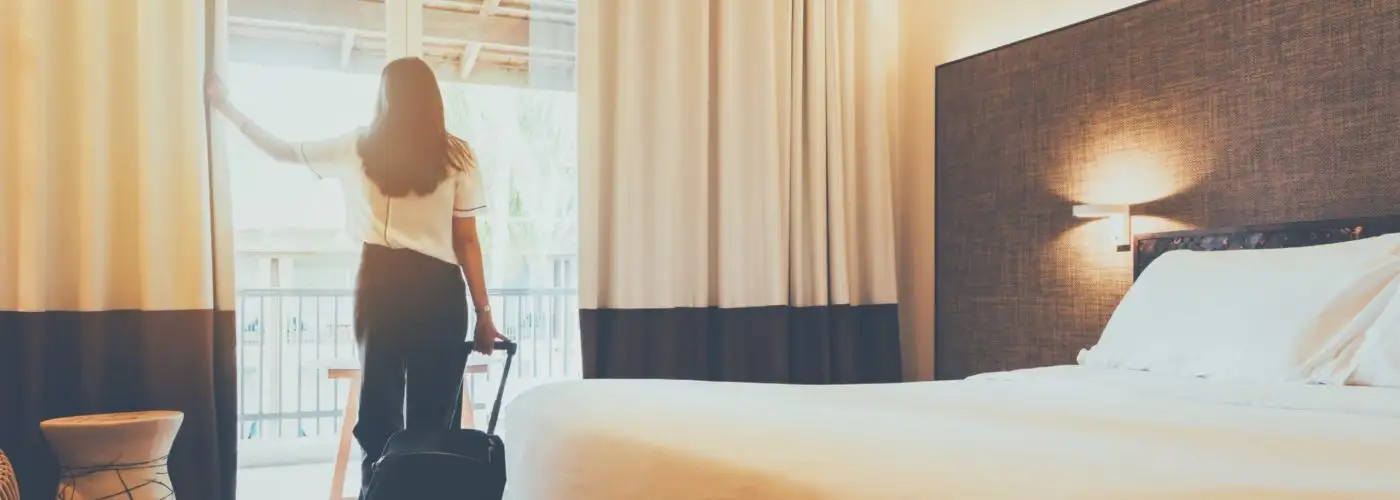The ground floor of a hotel is the most convenient, and the top floor has the best views—but they’re not the safest floors to stay on in a hotel. Here’s why, and which floors you should request to stay on instead.
The Floors You Should Never Stay On

Avoid staying on the first or second floors of a hotel, as they are easier for criminals to break into from exterior windows or balconies.
Travelers should also steer clear of staying on high floors as well, if possible.
Kevin Coffey, Travel Safety expert and retired member of the Los Angeles Police Department (LAPD) explains, “Generally, fire departments in major cities have aerial ladders that can reach six to seven stories.” If you’re staying on a higher floor (that the ladders can’t reach) and there is a fire that blocks your exit through the stairwells, you could be trapped. Additionally, staying on higher floors means you will need significantly more time to evacuate a building in the event of an emergency than if you were on a lower floor.
Coffey notes that this advice is for “Major westernized cities that have modern firefighting equipment.” Coffey says, “In some international under-developed cities and countries, this could be limited to floors 3 to 4, depending on the fire equipment.”
Which Hotel Floors Are the Safest To Stay On?
Floors three through six are generally the safest floors to stay on in cities with modernized fire fighting equipment, or floors three to four in destinations without. These levels are the sweet spot of being in a good position to evacuate quickly, without being easily accessible from the outside.
You Might Also Like:
• This Simple Trick Will Make Your Next Hotel Stay Easier• The One Thing You Need to Add into Your Phone Before Traveling Abroad
• What Not to Do When Exiting a Plane During an Emergency
• 9 Surprising Things You Didn’t Know About TSA PreCheck & Global Entry
• SmarterTravel Spotlight: Canyon Ranch, Lenox MA
We hand-pick everything we recommend and select items through testing and reviews. Some products are sent to us free of charge with no incentive to offer a favorable review. We offer our unbiased opinions and do not accept compensation to review products. All items are in stock and prices are accurate at the time of publication. If you buy something through our links, we may earn a commission.
Related
Top Fares From
Today's Top Travel Deals
Brought to you by ShermansTravel
Ireland: 9-Night Dublin, Kilkenny, Killarney, Galway...
Brendan Vacations
 vacation
$3875+
vacation
$3875+
Amsterdam to Copenhagen: Luxe, 18-Night Northern...
Regent Seven Seas Cruises



Ohio: Daily Car Rentals from Cincinnati
85OFF.com






